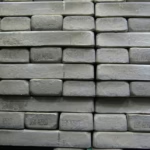From Newton to Now: The Evolution of Classical Mechanics
Introduction
Classical mechanics, the branch of physics that deals with the motion of objects and the forces that affect them, has been a cornerstone of scientific understanding since the time of Sir Isaac Newton in the 17th century. This article explores the evolution of classical mechanics from its inception to the present day, highlighting key developments, influential figures, and the impact of these advancements on physics and other sciences.
The Foundations of Classical Mechanics
1.1 Newton’s Laws of Motion
The story of classical mechanics begins with Sir Isaac Newton, whose landmark work "Philosophiæ Naturalis Principia Mathematica" (Mathematical Principles of Natural Philosophy), published in 1687, established the three laws of motion:
- An object in motion will remain in motion unless acted upon by a net external force.
- The acceleration of an object is directly proportional to the net force acting on it and inversely proportional to its mass.
- For every action, there is an equal and opposite reaction.
These laws not only unified the concepts of terrestrial and celestial motion but also provided the mathematical framework necessary to describe the physical world, establishing Newtonian mechanics as the authoritative explanation of motion for centuries.
1.2 The Law of Universal Gravitation
Alongside his laws of motion, Newton formulated the Law of Universal Gravitation, which posits that every point mass attracts every other point mass in the universe with a force that is proportional to the product of their masses and inversely proportional to the square of the distance between them. This revolutionary idea explained both falling objects on Earth and the motion of celestial bodies, laying the groundwork for future developments in physics and astronomy.
The Age of Enlightenment and Beyond
2.1 The Development of Conservation Laws
In the centuries following Newton, several key principles emerged that would further shape classical mechanics, notably the conservation laws. These include the conservation of momentum, energy, and angular momentum, which provided deep insights into physical processes, allowing for the analysis of collisions, orbits, and mechanical systems.
2.2 Lagrangian and Hamiltonian Mechanics
The 18th and 19th centuries saw the transformation of classical mechanics through the development of Lagrangian and Hamiltonian mechanics.
-
2.2.1 Lagrangian Mechanics
Joseph-Louis Lagrange introduced a reformulation of classical mechanics in "Mécanique Analytique" in 1788. He replaced Newton’s laws with the principle of least action, allowing for a more generalized approach to mechanics that could easily accommodate complex systems. The Lagrangian formulation is particularly valuable in dealing with problems involving constraints and has far-reaching implications in areas like quantum mechanics and general relativity. - 2.2.2 Hamiltonian Mechanics
Building on Lagrange’s work, William Rowan Hamilton developed Hamiltonian mechanics in the 1830s. This framework provided a more powerful mathematical formulation of mechanics, using phase space to describe physical systems and bringing about significant advancements in the field of statistical mechanics and thermodynamics.
The Industrial Revolution and the Expansion of Mechanics
3.1 The Impact of Steam Power and Machines
The Industrial Revolution in the late 18th and early 19th centuries transformed the landscape of classical mechanics. The advent of steam power and machinery called for improved understanding and application of mechanical principles. Engineers like James Watt and George Stephenson utilized classical mechanics to design steam engines and locomotives that revolutionized transport and manufacturing.
3.2 Exploration of Vibrations and Waves
During this period, the study of vibrations and waves became increasingly important. The mathematical formulation of wave equations led to advancements in acoustics and electromagnetism, ultimately influencing technologies such as telecommunication and sound engineering.
The Onset of Thermodynamics
4.1 The Connection to Heat and Work
As classical mechanics matured, it began to intersect with the emerging field of thermodynamics. The early 19th century saw the development of the concepts of heat and work, leading to the realization that energy could change forms but never be created or destroyed—an extension of the conservation principles that govern mechanics.
4.2 The Kinetic Theory of Gases
The late 19th century marked a significant intersection of mechanics and thermodynamics with the development of the kinetic theory of gases. This theory posited that gas pressure arises from the motion of molecules, providing a microscopic explanation of macroscopic thermodynamic phenomena.
The Transition to Modern Physics
5.1 The Contributions of Einstein and Relativity
The early 20th century brought about a paradigm shift with the advent of Einstein’s theories of special and general relativity. While classical mechanics remained applicable in most everyday situations, Einstein showed that Newton’s laws would need modification at very high speeds and in intense gravitational fields.
5.2 Quantum Mechanics: A New Frontier
The introduction of quantum mechanics in the 1920s further challenged classical mechanics. While classical mechanics considers deterministic trajectories of particles, quantum mechanics introduces probabilistic outcomes, fundamentally altering our understanding of physical reality.
The Present and Future of Classical Mechanics
6.1 Technological Advances: Simulations and Computational Mechanics
In contemporary science and engineering, classical mechanics continues to play a critical role. With the advent of powerful computing technologies, simulations based on classical mechanics allow researchers and engineers to model complex systems, ranging from the motion of planets to the behavior of fluids and materials in engineering applications.
6.2 Educational and Interdisciplinary Applications
Classical mechanics remains a fundamental subject in physics education, serving as a prerequisite for understanding other areas of physics. Moreover, its principles are applied across disciplines, including engineering, robotics, and biomechanics, illuminating the interconnectedness of physical science and technology.
Conclusion
From Newton’s early insights to the complexities of modern physics, the evolution of classical mechanics illustrates the dynamic nature of scientific inquiry. While the framework laid down by Newton still underpins much of classical physics, advancements through reformulations and interdisciplinary applications continue to shape our understanding of the natural world. As we move forward, classical mechanics will undoubtedly remain a vital foundation for both theoretical exploration and technological innovation in an ever-evolving scientific landscape.
References
- Newton, I. (1687). Philosophiæ Naturalis Principia Mathematica.
- Lagrange, J.-L. (1788). Mécanique Analytique.
- Hamilton, W. R. (1834). Theory of Systems of Rays.
- Einstein, A. (1905). "On the Electrodynamics of Moving Bodies." Annalen der Physik.
- Einstein, A. (1915). "Die Feldgleichungen der Gravitation." Sitzungsberichte der Preussischen Akademie der Wissenschaften.
This article succinctly encapsulates the journey of classical mechanics through its pivotal developments and transformations, offering a comprehensive overview of its evolution from Newton to contemporary applications.


























Add Comment